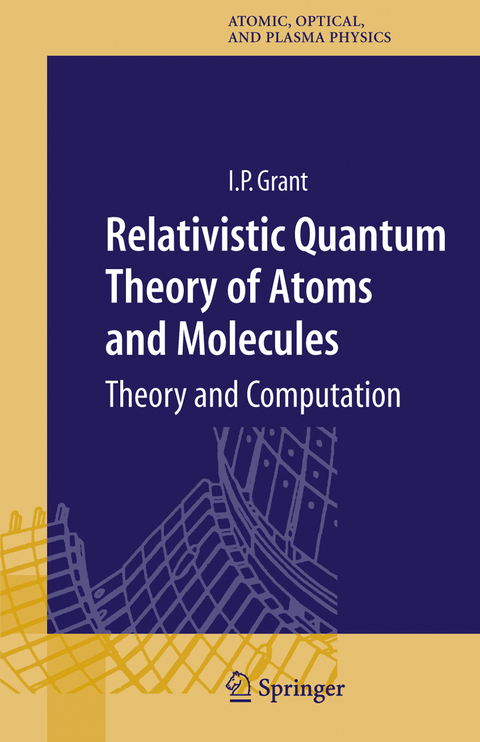
Relativistic Quantum Theory of Atoms and Molecules
Springer-Verlag New York Inc.
978-0-387-34671-7 (ISBN)
Professor Grant first became aware of the need to develop a relativistic theory of atomic and molecular structure some 50 years ago in connection with X-ray absorption by heavy metals. In a 1961 paper, he showed that the Dirac-Hartree-Fock equations for atoms could be written in a simple form which has been used in all subsequent atomic calculations. This early work was generalized to permit more accurate multi-configurational calculations in the next two decades, implemented in the widely used GRASP code for relativistic modeling of electronic wavefunctions, energy levels and radiative transition probabilities of spectral lines. The DARC code, an extension of GRASP which is designed to calculate cross sections for atom/ion collisions with low-energy electrons or photons, was developed mainly in the 1980s and is now becoming more relevant for applications involving target atoms of higher atomic number. The BERTHA code is the first relativistic molecular structure code designed to take advantage of the internal structure of Dirac four-component spinors; its speed and accuracy are now beginning to be appreciated and utilized effectively by quantum chemists. The book is designed for all those who would like to know more about the mathematics and physics of relativistic atomic and molecular theory and who wish to use the computational machinery now available to solve problems in atomic and molecular physics and their applications. Professor Grant was elected a Fellow of the Royal Society of London in 1992.
Relativity in atomic and molecular physics.- Relativity in atomic and molecular physics.- Foundations.- Relativistic wave equations for free particles.- The Dirac Equation.- Quantum electrodynamics.- Computational atomic and molecular structure.- Analysis and approximation of Dirac Hamiltonians.- Complex atoms.- Computation of atomic structures.- Computation of atomic properties.- Continuum processes in many-electron atoms.- Molecular structure methods.- Relativistic calculation of molecular properties.- Frequently used formulae and data.- Frequently used formulae and data.- Supplementary mathematics.- Supplementary mathematics.
From the reviews:"Relativistic Quantum Theory of Atoms and Molecules is a book that should be on the desk of every atomic-physics student and research scientist. Written by a master of the field, it contains a wealth of information about relativistic atomic and molecular structures." (Walter Johnson, Physics Today, January, 2008)“In the text, the presentation is usually well balanced, with words and formulas in an appropriate ratio; explanations are frequently supplemented by some sentences that aid the readers’ orientation and motivation. Although the book is particularly tailored towards applications within atomic and molecular theory, several chapters may also be useful for readers whose interests embrace more general aspects of relativistic quantum mechanics. … In summary, Grant’s monograph is more than just a ‘valuable addition’ to the literature on relativistic atomic and molecular theory.” (H. Hogreve, Mathematical Reviews, Issue 2012 c)
| Reihe/Serie | Springer Series on Atomic, Optical, and Plasma Physics ; 40 |
|---|---|
| Zusatzinfo | 46 Illustrations, black and white; XXIV, 800 p. 46 illus. |
| Verlagsort | New York, NY |
| Sprache | englisch |
| Maße | 155 x 235 mm |
| Themenwelt | Naturwissenschaften ► Physik / Astronomie ► Atom- / Kern- / Molekularphysik |
| Naturwissenschaften ► Physik / Astronomie ► Quantenphysik | |
| Naturwissenschaften ► Physik / Astronomie ► Relativitätstheorie | |
| Naturwissenschaften ► Physik / Astronomie ► Theoretische Physik | |
| ISBN-10 | 0-387-34671-6 / 0387346716 |
| ISBN-13 | 978-0-387-34671-7 / 9780387346717 |
| Zustand | Neuware |
| Haben Sie eine Frage zum Produkt? |
aus dem Bereich


